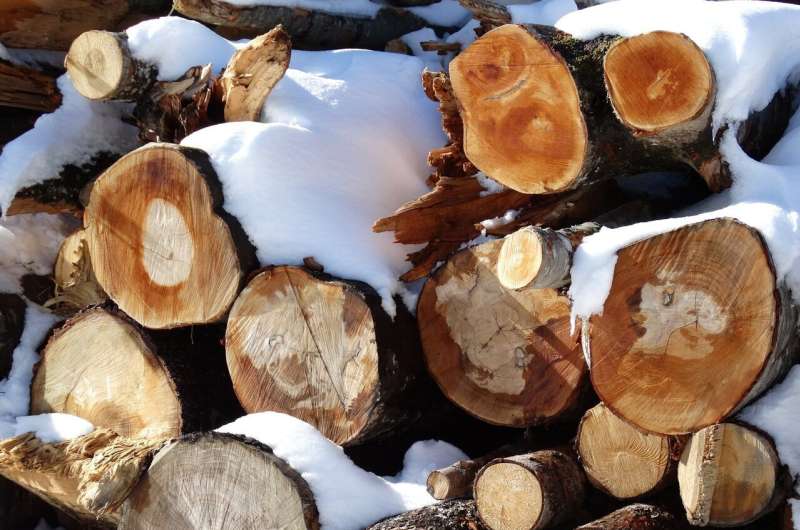Credit: Pixabay/CC0 Public Domain
While deforestation levels have decreased significantly since the turn of the 21st century, the United Nations (UN) estimates that 10 million hectares of trees have been felled in each of the last five years.
Aside from their vital role in absorbing CO2 from the air, forests play an integral part in maintaining the delicate ecosystems that cover our planet.
Efforts are now underway across the world to rectify the mistakes of the past, with the UN Strategic Plan for Forests setting out the objective for an increase in global forest coverage by 3% by 2030.
With time being of the essence, one of the most popular methods of reforestation in humid, tropical regions is the planting of a single fast-growing species (monoculture) in a large area. This is especially important as a means of quickly preventing landslides in these regions that experience frequent typhoons and heavy rains.
However, new research published to Frontiers in Ecology and Evolution by a team from Hainan University and the Chinese Academy of Sciences has not only found this practice could have a detrimental effect on the surrounding soil water content, but it has developed a three-step method to remedy it.
To determine whether the monoculture plantings can help recover soil water content, the team reforested a small patch of extremely degraded tropical monsoon forest measuring 0.2 sq km near Sanya City, Hainan.
Rapid soil water loss
The team which included corresponding authors Dr. Chen Wang and Dr. Hui Zhang hypothesized that the significantly higher transpiration rate—the amount of water lost by plants over a period of time—would deplete soil water faster in their test forest than the slow-growing species found in the adjacent rainforest.
This would include both during the wet and dry seasons, resulting in much lower soil water content. Testing showed that the transpiration rate and transpiration-related trait values were between 5 and 10 times greater in the fast-growing species than slow-growing species in the rainy and dry seasons.
It also found that soil water content surrounding the dominant slow-growing species in a nearby forest was between 1.5 and 3 times greater than fast-growing species for both the rainy and dry seasons.
Three-step remedy
Despite this drawback, the monoculture planting of a fast-growing species is seen as important to prevent landslides following frequent typhoons and heavy rain. To help prevent the loss of soil water content, the team has proposed a three-step method that it describes as easy to implement.
This includes:
- Reconstructing the slope and soil layers based on a reference of undisturbed old-growth tropical forest.
- Refiling the same soils from the undisturbed old-growth tropical monsoon forest to plant fast-growing tree species to minimize impacts from landslides and other soil disturbance events.
- Planting slow-growing tree species from an undisturbed forest area within the fast-growing species stands to increase soil water content.
"Past and current human disturbances—such as ore mining and the plantation of commercial trees—have resulted in high rates of deforestation and ecosystem degradation across the world," said Dr. Wang, based at the South China Botanical Gardens in Guangzhou, China.
"These, in turn, result in a major threat to the global supply of freshwater. It is therefore urgent to initiate and maintain reforestation projects aimed at recovering soil water content and increasing freshwater supply to human society."
Writing in their paper, the scientists added: "We expect that this simple three-step method can be an effective means of restoring extremely degraded tropical forests in other parts of the world."
More information: "A method for performing reforestation to effectively recover soil water content in extremely degraded tropical rain forests" www.frontiersin.org/articles/1 … 2021.643994/abstract
Journal information: Frontiers in Ecology and Evolution
Provided by Frontiers
























